Sponsored Links
International Section
- UEFA Euro History
- UEFA Nations League
- FIFA World Cup History
- FIFA Women's World Cup
- 2012 Olympics
- Home Internationals
Cup History Section
UK Season Galleries
-
Premier & Football League
- 2022-2023
- 2021-2022
- 2020-2021
- 2019-2020
- 2018-2019
-
Scottish Professional Football League
- 2022-2023
- 2021-2022
- 2020-2021
- 2019-2020
- 2018-2019
- Previous Seasons>>>
- NIFL Premiership
- FA Women's Super League
Cymru Premier
Other Leagues
Articles
- The History of Football Kits UPDATED
- Eminent Victorians
- Room 101 - The Worst Kits of All Time
- Influential & Classic Kits
- Strange Hues - Colourful Favourites
- Iconic Away Kits
- Historical Football Kits in Print
External Links
The Definitive English and Scottish Football Kit Archive

The material on this site is copyright © Historical Football Kits, all rights reserved. Club crests and sponsors' logos are the intellectual property of their respective owners. For more details visit Copyright Information.
Deep links are provided throughout the site to help visitors purchase replica shirts from leading online retailers. HFK receives a commission on these sales.
Latest News & Updates
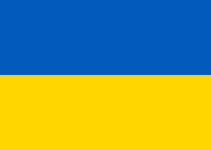
28 October
 Mark Andrews has submitted a press cutting that proves that the badge on Bromley's shirts worn in the 1911 Amateur Cup final, a gift from a committee member, were blue and not red as I had shown them.
Mark Andrews has submitted a press cutting that proves that the badge on Bromley's shirts worn in the 1911 Amateur Cup final, a gift from a committee member, were blue and not red as I had shown them.
This provides a perfect illustration of Moor's Law. This, if you're not familiar with it states that:
1. In the absence of other evidence, where two possible interpretations are equally likely, the one you choose will be wrong.
2. If, in the light of rule (1) you change your mind and choose the other interpretation, this will also be wrong.
Northern Ireland variant kit worn against Greece in 1961 added. Brechin City 1977-78 added.
Richard Ralph has uncovered a press article that confirms that Maidstone United adopted their first all-white kit in October 1970 and provides us with some new background information. I've added this to the site and expanded the Stone's crest history.
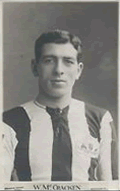 This granite-jawed fellow is the Newcastle United defender, Bill McCracken wearing a jersey from the 1910 FA Cup final, which Toon won after a replay against Barnsley. This was the first time that the team had won the competition, having lost in three finals in the previous decade. It is also the first time that the city coat of arms was worn on the team's shirts. Although the crest did not appear in League games, a tradition was established that it would appear in every FA Cup Final United appeared in and I have now added these to the Newcastle United page in view of their historical importance.
This granite-jawed fellow is the Newcastle United defender, Bill McCracken wearing a jersey from the 1910 FA Cup final, which Toon won after a replay against Barnsley. This was the first time that the team had won the competition, having lost in three finals in the previous decade. It is also the first time that the city coat of arms was worn on the team's shirts. Although the crest did not appear in League games, a tradition was established that it would appear in every FA Cup Final United appeared in and I have now added these to the Newcastle United page in view of their historical importance.
McCracken was a formidable defender who played 432 times for the Magpies and sixteen times for Ireland. He invented the offside trap and holds the distinction of being one of the few players to have brought about a change in the laws of the game. Such was his mastery of the offside trap, the Offside Law was changed to make it easier for attackers.
On the subject of Newcastle United, one of my contributors and I are trying to pin down what colours their predecessor club, East End, wore in the late 1880s as the existing sources are rather ambiguous on the subject. Get in touch if you can help.
25 September
 I've added links to a number of replica shirts that have been recently added to 3Retro's inventory. These include Celtic (1994 2nd), Tottenham Hotspur (1988 2nd, 1986 2nd, 1991 FA Cup semi-final), Chelsea (1987 1st & 2nd), Derby County (2002 1st), England (1987 3rd), Hibernian (1994 1st), Ipswich Town (1994 1st), Manchester City (2000 1st), West Ham United (2006 FA Cup final).
I've added links to a number of replica shirts that have been recently added to 3Retro's inventory. These include Celtic (1994 2nd), Tottenham Hotspur (1988 2nd, 1986 2nd, 1991 FA Cup semi-final), Chelsea (1987 1st & 2nd), Derby County (2002 1st), England (1987 3rd), Hibernian (1994 1st), Ipswich Town (1994 1st), Manchester City (2000 1st), West Ham United (2006 FA Cup final).
You can view (and purchase) the full range of new products including those that do not feature on HFK by clicking the icon above and following the NEW@3R link on the store home page.
24 September
 This rather crumpled photograph, submitted by Harry Hyndman, is of Scunthorpe & Lyndsey United taken in 1911-12 showing the team wearing previously unrecorded halved jerseys. Note that some have the claret panel on the left others on the right: it was not unusual for tops of this design to come in both right and left handed versions at the time.
This rather crumpled photograph, submitted by Harry Hyndman, is of Scunthorpe & Lyndsey United taken in 1911-12 showing the team wearing previously unrecorded halved jerseys. Note that some have the claret panel on the left others on the right: it was not unusual for tops of this design to come in both right and left handed versions at the time.
 This prompted me to review the evidence for the striped tops I had presented for the period 1913-23. This image from 1913-14 is a good example and the most telling detail is the difference in contrast between the socks (which were claret and light blue) and the striped shirts. I now believe this was a change strip and have removed the striped kits from the record.
This prompted me to review the evidence for the striped tops I had presented for the period 1913-23. This image from 1913-14 is a good example and the most telling detail is the difference in contrast between the socks (which were claret and light blue) and the striped shirts. I now believe this was a change strip and have removed the striped kits from the record.
As I was in the neighbourhood I have added Scunny's anniversary crest and the 2023-24 & 2024-25 graphics.
Photo credit: English Fotball from the Beginning to the 1920s
30 August
League Two 2023-24 & 2024-25: Crewe Alexandra, Doncaster Rovers.
28 August
League Two 2023-24 & 2024-25: Accrington Stanley, AFC Wimbledon, Barrow, Bradford City, Colchester United, Crawley Town.
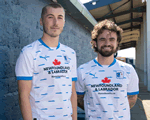 We have our first nominee for best new comedy shirt in the shape of Puma's latest offering for Barrow. First of all feast your eyes on the graphic that represents the Astute class submarines the town's shipyard produces for the Royal Navy. These tops are perfect pyjamas tops for toddlers with an interest in naval matters. Secondly take a look at the shirt sponsorship, commissioned by the provincial government of Newfoundland and Labrador. The Minister for Immigration, Population Growth and Skills, Gerry Byrne, said, "The truly global audience that professional English football has achieved will allow Newfoundland and Labrador to be promoted and featured to millions of viewers as a welcoming place to live, work and visit on an incredible level." With all due respect to the parties involved here I suspect the only thing on an "incredible level" is the minister's credulity if he believes Barrow will attract "millions of viewers". I am confident that the population of the town and its surrounds will not be queuing up to emigrate.
We have our first nominee for best new comedy shirt in the shape of Puma's latest offering for Barrow. First of all feast your eyes on the graphic that represents the Astute class submarines the town's shipyard produces for the Royal Navy. These tops are perfect pyjamas tops for toddlers with an interest in naval matters. Secondly take a look at the shirt sponsorship, commissioned by the provincial government of Newfoundland and Labrador. The Minister for Immigration, Population Growth and Skills, Gerry Byrne, said, "The truly global audience that professional English football has achieved will allow Newfoundland and Labrador to be promoted and featured to millions of viewers as a welcoming place to live, work and visit on an incredible level." With all due respect to the parties involved here I suspect the only thing on an "incredible level" is the minister's credulity if he believes Barrow will attract "millions of viewers". I am confident that the population of the town and its surrounds will not be queuing up to emigrate.
Photo credit: Barrow AFC
27 August
I am very pleased to add a link to Jean-Michel Dray's website which offers information on the origin of nicknames, crests and histories of prominent football clubs from around the world. The enormous archive can be searched by name, nation and by theme. The Taxonomy section is particularly interesting. Although the site is in French there are Google Translate links throughout pour les Britanniques monoglottes.
Today, with the assistance of Daniel Stoker, we are embarking on a major project to add all of the 2023-24 English and Scottish kits to the site. Daniel is currently working through the Premier League while I am starting with League Two and the plan is for us to meet in the middle. This will take some time but once completed we intend to add the kits for 2024-25 as well.
Premier League 2023-24: Arsenal, Aston Villa, AFC Bournemouth, Brentford, Fulham, Liverpool, Newcastle United, Nottingham Forest, Tottenham Hotspur, Wolverhampton Wanderers.
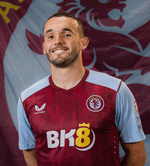 Since 2022 clubs are required by the FA to "undertake a
Since 2022 clubs are required by the FA to "undertake a 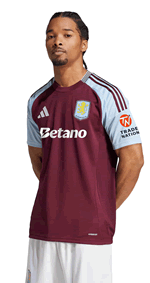 thorough and extensive consultation with supporters" before any material change to their crest or home colours can be introduced. Clubs must be able to produce evidence that a majority of regular supporters are in favour of the proposed changes. Unfortunately it appears that fans may not always produce the result that management wants, as with the circular crest approved by 77% of Aston Villa supporters last season. The board has been disappointed at the lack of impact the new design has had and so invited their supports to think again in a second consultation which resulted in a shield crest that looks remarkably like previous badges being approved.
thorough and extensive consultation with supporters" before any material change to their crest or home colours can be introduced. Clubs must be able to produce evidence that a majority of regular supporters are in favour of the proposed changes. Unfortunately it appears that fans may not always produce the result that management wants, as with the circular crest approved by 77% of Aston Villa supporters last season. The board has been disappointed at the lack of impact the new design has had and so invited their supports to think again in a second consultation which resulted in a shield crest that looks remarkably like previous badges being approved.
Photo credit: Aston Villa FC.
14 August
 We have Scottish club updates for 1995-96 from Ian McConnel today. Heart of Midlothian (detailing modified), Alloa Athletic (body & sleeve trim adjusted), Dunfermline Athletic (collar & cuffs corrected), Partick Thistle (trimmings on shorts corrected), Dundee (collar corrected, jacquard pattern added, version with centralised logos added), Falkirk (logo added to right sleeve, socks corrected), Raith Rovers (sock trim amended), Clydebank (collar amended and width of piping on shirt reduced), Stirling Albion (shirt trim adjusted, August 1995 version added - see photograph).
We have Scottish club updates for 1995-96 from Ian McConnel today. Heart of Midlothian (detailing modified), Alloa Athletic (body & sleeve trim adjusted), Dunfermline Athletic (collar & cuffs corrected), Partick Thistle (trimmings on shorts corrected), Dundee (collar corrected, jacquard pattern added, version with centralised logos added), Falkirk (logo added to right sleeve, socks corrected), Raith Rovers (sock trim amended), Clydebank (collar amended and width of piping on shirt reduced), Stirling Albion (shirt trim adjusted, August 1995 version added - see photograph).
Bonus material: Kilmarnock (1955-56 added), Rangers (1984-85 sponsorship added to change kit).
26 July
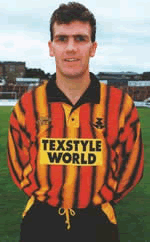 Macclesfield Town: (1977-78, 1978-79, 1980-81, 1981-82 added), Morecambe: (1980-81, 1982-83, 1984-85 added).
Macclesfield Town: (1977-78, 1978-79, 1980-81, 1981-82 added), Morecambe: (1980-81, 1982-83, 1984-85 added).
Here are some more Scottish club upates from Ian McConnel for the 1994-95 season: Aberdeen (completely redrawn), Hibernian (completely redrawn), Rangers (detailing updated on 1st, 2nd & Euro kits), Kilmarnock (detailing updated), Partick Thistle (collar altered & stripes made more fuzzy - yes that is the technical term), Clydebank (sock trim corrected), Airdrieonians (graphic added), Dundee United (collar and stripes revised).
The photograph shows Partick Thistle's unmistakeable 1994-95 shirt.
24 July
Bromley: 1982-83 shirt trim corrected, 1988-89, 1989-90, 1990-91 sponsors confirmed.
22 July
 Here is an intriguing team photograph of Brighton & Hove Albion from 1914-15 sent in by Paul Galiford, which gives us an insight into the economics of football in this period. What we see is that some of the players are wearing new, collarless shirts while others have contrasting buttoned crew necks, the style worn in the previous two seasons. A dozen football shirts would have cost between 38/- (£286 at today's prices) and 84/- (£6330), a considerable sum that clubs of modest means would struggle to afford. In Brighton's case there were not enough of the new tops to kit out both the first team and the reserves so some players are pictured wearing jerseys from the previous season.
Here is an intriguing team photograph of Brighton & Hove Albion from 1914-15 sent in by Paul Galiford, which gives us an insight into the economics of football in this period. What we see is that some of the players are wearing new, collarless shirts while others have contrasting buttoned crew necks, the style worn in the previous two seasons. A dozen football shirts would have cost between 38/- (£286 at today's prices) and 84/- (£6330), a considerable sum that clubs of modest means would struggle to afford. In Brighton's case there were not enough of the new tops to kit out both the first team and the reserves so some players are pictured wearing jerseys from the previous season.
20 July
 When a club achieves promotion from the National League to EFL League Two for the first time, the prospect of researching their entire kit history is a daunting one, especially if the club is an old one that has spent most of its career in the lower leagues. Therefore when Bromley beat Solihull Moors in the play-off final last May I decided that I would not add their history to the site. My view changed completely, however, when I received an email from Mark Andrews. Mark and Andy Kelly had collaborated on The Arsenal History and had debunked several myths about the Gunners including the one about the team wearing dark red shirts in the early days, research which they generously shared with HFK. It turns out that Mark has been digitising an enormous archive of material belonging to Roy Oliver relating to the Ravens. The material Mark has shared has allowed me to create a complete and detailed kit history for the club. Enjoy.
When a club achieves promotion from the National League to EFL League Two for the first time, the prospect of researching their entire kit history is a daunting one, especially if the club is an old one that has spent most of its career in the lower leagues. Therefore when Bromley beat Solihull Moors in the play-off final last May I decided that I would not add their history to the site. My view changed completely, however, when I received an email from Mark Andrews. Mark and Andy Kelly had collaborated on The Arsenal History and had debunked several myths about the Gunners including the one about the team wearing dark red shirts in the early days, research which they generously shared with HFK. It turns out that Mark has been digitising an enormous archive of material belonging to Roy Oliver relating to the Ravens. The material Mark has shared has allowed me to create a complete and detailed kit history for the club. Enjoy.
The photograph shows the 1910-11 side with the FA Amateur Cup, Bromley's first major trophy.
15 July
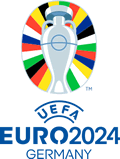
 So once again England's campaign in a major tournament ends in disappointment. That said, given how dismal they were in the group stage, they did extremely well to reach the final and they did play well. Unfortunately Spain were better in every department and deserve to be European Champions.
So once again England's campaign in a major tournament ends in disappointment. That said, given how dismal they were in the group stage, they did extremely well to reach the final and they did play well. Unfortunately Spain were better in every department and deserve to be European Champions.
I hope you have enjoyed the coverage here on HFK and once again I want to thank Daniel Stoker who created all of the graphics for the Euro 24 section. Daniel and I will be working on more new content over the next few weeks so watch this space...
Photo credit: Reuters.
11 July
 It's hard to believe after the turgid football they played in the group stage that England are in the final of the Euros
It's hard to believe after the turgid football they played in the group stage that England are in the final of the Euros  again. Once again the game was settled in the final minutes by a flash of individual brilliance, this time from Ollie Watkins.
again. Once again the game was settled in the final minutes by a flash of individual brilliance, this time from Ollie Watkins.
Photo credit: The Guardian
With the assistance of Daniel Stoker, I am bringing the Home International sections up to date. So far the Northern Ireland section has been completed and expect to finish the Republic of Ireland section later today.
1 July
 So I was watching the match yesterday with my wife, who sportingly pretends to support England after Poland caught the bus home, and as the match dragged on towards the end I was droning on about how dreadful they had been, and this was the end of Southgate and to think people seriously thought England could win this tournament and EXCUSE ME, WHAT JUST HAPPENED!! As the TV pundits of my youth woud have said, "The boy Bellingham done well tonight."
So I was watching the match yesterday with my wife, who sportingly pretends to support England after Poland caught the bus home, and as the match dragged on towards the end I was droning on about how dreadful they had been, and this was the end of Southgate and to think people seriously thought England could win this tournament and EXCUSE ME, WHAT JUST HAPPENED!! As the TV pundits of my youth woud have said, "The boy Bellingham done well tonight."
Photo credit: John Sibley/Reuters
25 June
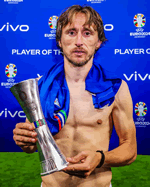 There has been no shortage of last minute drama in the Euros so far and last night's Group B finale provided another one. At 38 years and 289 days, Luka Modrić, is the oldest player ever to have scored in the Euros. His 55th minute goal scored moments after he missed a penalty was an example of instant redemption. He is seen here with the UEFA Man of the Match Award he received last night, looking clearly distressed following Italy's equaliser, scored with 19 seconds of stoppage time remaining that almost certainly means Croatia will be eliminated.
There has been no shortage of last minute drama in the Euros so far and last night's Group B finale provided another one. At 38 years and 289 days, Luka Modrić, is the oldest player ever to have scored in the Euros. His 55th minute goal scored moments after he missed a penalty was an example of instant redemption. He is seen here with the UEFA Man of the Match Award he received last night, looking clearly distressed following Italy's equaliser, scored with 19 seconds of stoppage time remaining that almost certainly means Croatia will be eliminated.
Photo credit: UEFA
Odds & Sods
My thanks to Paul Galliford for pointing out that the stripes on Brighton & Hove Albion's 1972-73 kits needed a tweak.
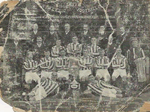 This extremely battered photograph was sent to me recently by Christine Hamilton from Australia and taken in 1905-06. Although captioned Leith Athletic, I think this is more properly Leith FC, which was formed in 1905 to replace the original club. One of the players is John Hamilton, the great-grandfather of Christine's husband. The Hamiltons are investigating their family tree so if you can shed any light on this team or John Hamilton's career please get in touch and I'll forward the information.
This extremely battered photograph was sent to me recently by Christine Hamilton from Australia and taken in 1905-06. Although captioned Leith Athletic, I think this is more properly Leith FC, which was formed in 1905 to replace the original club. One of the players is John Hamilton, the great-grandfather of Christine's husband. The Hamiltons are investigating their family tree so if you can shed any light on this team or John Hamilton's career please get in touch and I'll forward the information.
Photo credit: Christine Hamilton
19 June
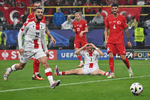 With the first round of group matches now complete, there has been much to enjoy in the Euros so far. Both of yesterday's Group F matches produced exciting football with the result in doubt right up to the final whistle. I was especially impressed with Georgia who gave it everything in their match with Turkey. The 3-1 scoreline, courtesy of Akturkoglu slotting the ball into the undefended Georgian goal at the end of added time, really does not do justice to their efforts.
With the first round of group matches now complete, there has been much to enjoy in the Euros so far. Both of yesterday's Group F matches produced exciting football with the result in doubt right up to the final whistle. I was especially impressed with Georgia who gave it everything in their match with Turkey. The 3-1 scoreline, courtesy of Akturkoglu slotting the ball into the undefended Georgian goal at the end of added time, really does not do justice to their efforts.
Photo credit: The Guardian
17 June
 Our Euro 24 coverage continues with yesterday's match details now on the site. Watching the Serbia v England match last night I noticed that Jude Bellingham had large holes in the back of his socks. At first I thought the poor lamb had suffered a kit malfunction but then I noticed several more players wearing holy stockings. Clearly I've not been paying enough attetion because this trend for cutting holes in socks has become a thing among elite footballers and will no doubt start appearing on school playing fields shortly. It is claimed that the holes reduce the risk of injury and release muscle tension. This sounds like horse feathers to me but it can only be a matter of time before the kit manufacturers come up with a new magic polyester gimmick that will deliver soothing massages for tired calf muscles.
Our Euro 24 coverage continues with yesterday's match details now on the site. Watching the Serbia v England match last night I noticed that Jude Bellingham had large holes in the back of his socks. At first I thought the poor lamb had suffered a kit malfunction but then I noticed several more players wearing holy stockings. Clearly I've not been paying enough attetion because this trend for cutting holes in socks has become a thing among elite footballers and will no doubt start appearing on school playing fields shortly. It is claimed that the holes reduce the risk of injury and release muscle tension. This sounds like horse feathers to me but it can only be a matter of time before the kit manufacturers come up with a new magic polyester gimmick that will deliver soothing massages for tired calf muscles.
15 June

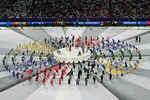 And we're off! I have to say that I didn't really know what to make of the opening ceremony but at least it didn't last very long.
And we're off! I have to say that I didn't really know what to make of the opening ceremony but at least it didn't last very long.
As usual HFK will bring you match-by-match details as the tournament progresses. For the moment we have to commiserate with Scottish supporters after their team were handed a thrashing by a very impressive German team in Group A.
Photo credit: Ahram Online.
11 June
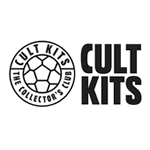 Today we welcome our newest affiliate parner to the site. Cult Kits is a relative newcomer on the scene selling authentic shirts including match worn, vintage and classic shirts from all over the world. While their collection is large most of the products on sale are single items so once they're gone, they're gone. New items are added every evening at 6pm GMT so that seems a good time to drop in on the store.
Today we welcome our newest affiliate parner to the site. Cult Kits is a relative newcomer on the scene selling authentic shirts including match worn, vintage and classic shirts from all over the world. While their collection is large most of the products on sale are single items so once they're gone, they're gone. New items are added every evening at 6pm GMT so that seems a good time to drop in on the store.
With the Euros starting this Friday, I've added links to more of our afiliate partners so you can purchase not only current kits and merch but also vintage and classic shirts from the past. Please remember that HFK receives commission on all sales generated so by making your purchases through the links provided you are helping to meet the costs of keeping HFK online.
10 June
 Two weeks ago I was contacted by Daniel Stoker who has been following HFK since childhood, leading to an obsession with football kits and sporting history. This led him to experiment with free graphics software in order to create kit graphics based on the style used on HFK. I was truly impressed with the samples that he sent me, which were indistinguishable from the graphics that I create. I was, therefore, only too happy too accept Daniel's offer to create graphics for Euro 24, which he knocked out in record time.
Two weeks ago I was contacted by Daniel Stoker who has been following HFK since childhood, leading to an obsession with football kits and sporting history. This led him to experiment with free graphics software in order to create kit graphics based on the style used on HFK. I was truly impressed with the samples that he sent me, which were indistinguishable from the graphics that I create. I was, therefore, only too happy too accept Daniel's offer to create graphics for Euro 24, which he knocked out in record time.
So I can now announce that Euro 24 will be covered by HFK and that the new section has been launched today - please tell your friends!!
 Some other snippets: Denis Hurley from the excellent museumofjerseys.com has been in touch to let me know that he has finished the complete 2023-24 Premier League kit graphics. Do pay a visit - the graphics are very good indeed.
Some other snippets: Denis Hurley from the excellent museumofjerseys.com has been in touch to let me know that he has finished the complete 2023-24 Premier League kit graphics. Do pay a visit - the graphics are very good indeed.
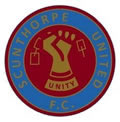 HFK contributor, author and authority on everything Bradford City, John Dewhurst, has been in touch about Scunthorpe United's plans to re-adopt their 1982 Unity Fist Crest for their 125th aniversary. John recalls that in 1981, returning home on the supporters coach from the match between Scunny and City, he read in the match programme that Scunthorpe United were running a competition to design a new club crest. John sketched out a design on a sandwich wrapper and duly submitted it and to his surprise, his effort won! You can read more on John's Wool City Rivals blog.
HFK contributor, author and authority on everything Bradford City, John Dewhurst, has been in touch about Scunthorpe United's plans to re-adopt their 1982 Unity Fist Crest for their 125th aniversary. John recalls that in 1981, returning home on the supporters coach from the match between Scunny and City, he read in the match programme that Scunthorpe United were running a competition to design a new club crest. John sketched out a design on a sandwich wrapper and duly submitted it and to his surprise, his effort won! You can read more on John's Wool City Rivals blog.
15 May
 Ian McConnel has submitted some interesting snippets along with his latest update including this rare team photograph of Brechin City from 1955-56 when they wore red shirts for the first time. While investigating this I discovered that the following season they wore red and black socks.
Ian McConnel has submitted some interesting snippets along with his latest update including this rare team photograph of Brechin City from 1955-56 when they wore red shirts for the first time. While investigating this I discovered that the following season they wore red and black socks.
Ian has also found evidence that Rangers wore black socks with red rings on the turnover in 1902-03, two years earlier that previously thought. He has also shed light on the first and change kits worn in 1915-16, which appears to be when the iconic black socks with red turnovers firstappeared and the RFC monogram was worn for the first time on their change shirts.
 Unfortunately the quality of this image is not so good but it shows Rangers wearing shirts with narrow hoops on a post season tour of France and Switzerland in May 1923. It's possible that this was a one-off as squad photographs of the period suggest they wore white shirts when required to change.
Unfortunately the quality of this image is not so good but it shows Rangers wearing shirts with narrow hoops on a post season tour of France and Switzerland in May 1923. It's possible that this was a one-off as squad photographs of the period suggest they wore white shirts when required to change.
Here are Ian's updates for 1993-94: Heart of Midlothian (detailing added), Partick Thistle (detailing added), Kilmarnock (sleeve details corrected & shadow stripes added), St Johnstone (stripes and collar corrected), Hibernian (cuff detailing added), Clydebank (detailing added), Dundee United (trim adjusted), Dumbarton (shirts revised & jacquard pattern added), Alloa Athletic (sleeve bands corrected & jacquard pattern enhanced).
8 May
I've added some minor changes to the History of Football Kits section, correcting the timeline for the 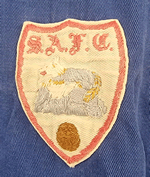 Heysel and Hillsborough disasters in Chapter 8 and adding references to the impact of the Taylor Report and TV Rights payments in Chapter 9.
Heysel and Hillsborough disasters in Chapter 8 and adding references to the impact of the Taylor Report and TV Rights payments in Chapter 9.
In April/May 2022 I published the story behind this crest, which was worn by Stirling Albion in 1956-57. Somehow I failed to add this to the club section, a fact recently pointed out to me by Skitara 71 and now rectified. You may notice that the shirt is blue and white rather than the familiar red and white. This is because the chairman of the Binos donated a surplus set of change shirts to Rothes whose chairman was a long-standing friend. The Speysiders wore these shirts when they won the Highland League in 1958-59.
19 April
I've made some changes to the History of Football Kits section, expanding Chapter 8 (1980-89) and adding a new chapter covering the period 1990-1999. Enjoy.
12 April
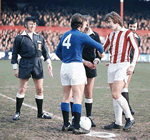 In the 1970s, Chelsea frequently wore variations on their familiar strip. Paul Galliford has found another one, worn at Stoke City on 27 January 1974. It makes sense that their white socks were changed (a requirement since 1968-69) but it is odd that they also changed into white shorts. Please note the excellent retro Teddy-Boy haircut sported by the linesman
In the 1970s, Chelsea frequently wore variations on their familiar strip. Paul Galliford has found another one, worn at Stoke City on 27 January 1974. It makes sense that their white socks were changed (a requirement since 1968-69) but it is odd that they also changed into white shorts. Please note the excellent retro Teddy-Boy haircut sported by the linesman
Tottenham Hotspur (1969-70, 1970-71, 1971-75 change kit colours adjusted).
Photo Credit: Colorsport
11 April
 I'm pleased to announce that I have repaired all of the broken links to UK Soccershop. The small buttons below my graphics will take you to the corresponding shirt in the online store while the large buttons (see left) allow you to browse all of the items in the store related to the relevant club or national team of interest. This includes current season kits (which do not appear on HFK), concept kits and all sorts of merch. HFK receives a commission on all sales generated through these links which helps meet the cost of keeping the site running.
I'm pleased to announce that I have repaired all of the broken links to UK Soccershop. The small buttons below my graphics will take you to the corresponding shirt in the online store while the large buttons (see left) allow you to browse all of the items in the store related to the relevant club or national team of interest. This includes current season kits (which do not appear on HFK), concept kits and all sorts of merch. HFK receives a commission on all sales generated through these links which helps meet the cost of keeping the site running.
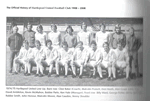 With the help of our good chum Ralph Pomeroy I've been picking away at an anomoly in the kit history of Hartlepool United. In the club's official history we find this team photograph taken before the start of the 1974-75 season, looking very smart in a new strip that features the club's leaping hart crest for the first time.
With the help of our good chum Ralph Pomeroy I've been picking away at an anomoly in the kit history of Hartlepool United. In the club's official history we find this team photograph taken before the start of the 1974-75 season, looking very smart in a new strip that features the club's leaping hart crest for the first time. 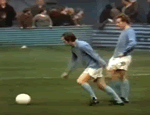 It is, however, not clear if this outfit was ever worn in the league as we have not found any match photos that show this kit. We do, however, have evidence that the previous season's plain lightish blue tops were used as shown in this screen grab of a match against Workington from November 1974.
It is, however, not clear if this outfit was ever worn in the league as we have not found any match photos that show this kit. We do, however, have evidence that the previous season's plain lightish blue tops were used as shown in this screen grab of a match against Workington from November 1974.
Photo Credits: The Official History of Hartlepool United FC 1908-2008, YouTube (16.38 - 17.30).
5 April
I've finished repairing the UK Soccershop affiliate links for English Clubs and will start on the Scottish Clubs next week.
Before that here are a few updates. Crawley (1951-53 added - thanks to Richard Essen): Ralph Pomeroy has provided photographic and film evidence that Hartlepools United wore plain shirts in 1974-75 and that these were lightish blue.
 This photograph of the Gillingham team of 1964-65 wearing candy stripes, submitted by Patrick Hobb-Chambers, proved a bit of a poser. I have seen it before and originally posted a graphic showing this as the Gill's first choice kit but in 2020, several photos of the team wearing an all-blue strip at home came to light and I changed the graphic. Fortunately Patrick provided links to all of his sources on the excellent Gillingham Scrapbook website which has press reports from every match in the 1964-65 season and from these I was able to establish that the striped tops were worn from August to October 1964 when the plain blue shirts of their change kit became first choice.
This photograph of the Gillingham team of 1964-65 wearing candy stripes, submitted by Patrick Hobb-Chambers, proved a bit of a poser. I have seen it before and originally posted a graphic showing this as the Gill's first choice kit but in 2020, several photos of the team wearing an all-blue strip at home came to light and I changed the graphic. Fortunately Patrick provided links to all of his sources on the excellent Gillingham Scrapbook website which has press reports from every match in the 1964-65 season and from these I was able to establish that the striped tops were worn from August to October 1964 when the plain blue shirts of their change kit became first choice.
29 February
 Apparently a recent edition of Antiques Roadshow (not on my watchlist I have to say) featured three Scottish caps awarded to Rob Boyd, including this one for Scotland's match against Wales in March 1891. Tony Sealey sent in this screen grab, which includes a photograph of the team wearing an all-navy strip.
Apparently a recent edition of Antiques Roadshow (not on my watchlist I have to say) featured three Scottish caps awarded to Rob Boyd, including this one for Scotland's match against Wales in March 1891. Tony Sealey sent in this screen grab, which includes a photograph of the team wearing an all-navy strip.
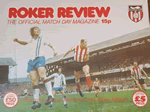 In 1973 Portsmouth dropped their traditional blue shirts, white shorts and red socks in favour of white shirts with two vertical blue stripes on the left, while the club crest was worn on the "wrong" side. At the end of the 1975-76 season, Admiral supplied them with a set of branded shirts shown here in their final match against Sunderland. Although the detail can't be made out in the photograph, Tony has confirmed with the Pompey History Society that these shirts featured a new crest that combined the familiar moon and star with a sword and anchor (symbolising the Army and Royal Navy). After losing against this game, Portsmouth were relegated to the Third Division and the white shirts were quietly dropped along with the new crest in favour of a more traditional strip. The sword and anchor motif reappeared in 1980 but was never popular with supporters.
In 1973 Portsmouth dropped their traditional blue shirts, white shorts and red socks in favour of white shirts with two vertical blue stripes on the left, while the club crest was worn on the "wrong" side. At the end of the 1975-76 season, Admiral supplied them with a set of branded shirts shown here in their final match against Sunderland. Although the detail can't be made out in the photograph, Tony has confirmed with the Pompey History Society that these shirts featured a new crest that combined the familiar moon and star with a sword and anchor (symbolising the Army and Royal Navy). After losing against this game, Portsmouth were relegated to the Third Division and the white shirts were quietly dropped along with the new crest in favour of a more traditional strip. The sword and anchor motif reappeared in 1980 but was never popular with supporters.
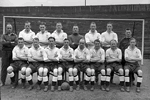 Further research by Martin Nesbit confirms that Bolton Wanderers continued to wear their old crest immediately after the end of the Second World War and it was not untl 1951 that the redesigned version was introduced. The photograph is of the 1946-47 team and clearly shows the badge that first appeared in 1921.
Further research by Martin Nesbit confirms that Bolton Wanderers continued to wear their old crest immediately after the end of the Second World War and it was not untl 1951 that the redesigned version was introduced. The photograph is of the 1946-47 team and clearly shows the badge that first appeared in 1921.
Photo Credits: BBC, Sunderland AFC, Colorsport.
27 February
3Retro have added quite a lot of new stock to their online store and I have added deep links to the relevant club pages. You can use this link to view the new items New@ Retro. In the course of doing this I discovered that all links to UKSoccershop are currently broken. This is apparently because they have changed their affiliate marketing partner. I'm in the process of setting up an account with the new partner and once this is complete I'll start repairs. Watch this space for updates.
 Our old pal, Tony Sealey, has been busy poking around obscure bits of the interweb and looking into a few oddities for us. This photograph is of the Bradford City squad for 1976-77 probably taken pre-season. Two styles of shirt are in evidence: those with the central vertical panels were supplied by Litesome at the start of the 1975-76 season while those with the more widely spaced "braces" were, I had thought, a one-off worn in the FA Cup semi-final against Southampton in March 1976. Tony has found that these tops were worn in the previous round and in at last one league game and became first choice in 1976-77. The conclusion is that these new-look tops replaced the older design around March of 1976. So why are the players wearing a mixture of tops? It's most likely that the club did not have a full-set on hand when the photo was taken so kitted out some players in the older shirts.
Our old pal, Tony Sealey, has been busy poking around obscure bits of the interweb and looking into a few oddities for us. This photograph is of the Bradford City squad for 1976-77 probably taken pre-season. Two styles of shirt are in evidence: those with the central vertical panels were supplied by Litesome at the start of the 1975-76 season while those with the more widely spaced "braces" were, I had thought, a one-off worn in the FA Cup semi-final against Southampton in March 1976. Tony has found that these tops were worn in the previous round and in at last one league game and became first choice in 1976-77. The conclusion is that these new-look tops replaced the older design around March of 1976. So why are the players wearing a mixture of tops? It's most likely that the club did not have a full-set on hand when the photo was taken so kitted out some players in the older shirts.
Based on a description in the Tottenham Hotspur minute book from May 1986 I have the team shirts from 1886-1889 as mid-blue and white. However, fixture books that were sold at auction last December confirm that they were in fact light blue and white.
21 February
Once again I have to apologise for the very long hiatus that meant there have been no updates to the site for a long time. The past six months have been very challenging and I have been focussed on health and family matters.
Happily I'm now in a position to resume work on the site and will start by working through the contributions sitting in my inbox starting with the most recent of Ian McConnel's Scottish club corrections.
All entries from 2023 have been moved to the News & Updates Archive.
Heart of Midlothian (1991-92, 1992-93 detailing modified/added), Airdrieonians (1991-92 added), Rangers (1990-92 shorts detailing tweaked), Hamilton Academical (1991-93 detailing tweaked), Motherwell (1991-92 sock trim added), St Mirren (1991-92, 1992-93 collar and sock trim amended), Falkirk (1991-94 amended), Dundee United (1991-92, 1992-93 shirt and shorts trim corrected), St Johnstone (1991-93 shorts trim corrected), Partick Thistle (Aug-Dec 1991 added), Cowdenbeath (1991-93 collar trim, cuffs and jacquard print revised), Queen's Park (1989-92 Umbro logos added & collar trim revised).
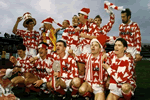 Hamilton Academical (shown here celebrating winning the B&Q Trophy in 1992) are one of many teams that dropped distinctive, traditional shirts in favour of something a bit more radical during the Nineties. At least the scarves and silly hats partially obscure the sheer awfulness of the Matchwinner chevron design worn here.
Hamilton Academical (shown here celebrating winning the B&Q Trophy in 1992) are one of many teams that dropped distinctive, traditional shirts in favour of something a bit more radical during the Nineties. At least the scarves and silly hats partially obscure the sheer awfulness of the Matchwinner chevron design worn here.
Photo Credit: The Daily Record.
 This rather scruffy photograph of a game between Hibernian and Rangers was taken in January 1962. The point of interest is that Hibs are wearing long sleeved shirts with crew necks almost certainly for the first time. There is abundant photographic evidence that they continued to wear continental V neck shirts until 1964 so it is likely that the tops worn here were adopted for cold weather. Unlike the effete folk of Edinburgh, Glaswegians do not feel the cold so the 'Gers team are kitted out in short sleeves.
This rather scruffy photograph of a game between Hibernian and Rangers was taken in January 1962. The point of interest is that Hibs are wearing long sleeved shirts with crew necks almost certainly for the first time. There is abundant photographic evidence that they continued to wear continental V neck shirts until 1964 so it is likely that the tops worn here were adopted for cold weather. Unlike the effete folk of Edinburgh, Glaswegians do not feel the cold so the 'Gers team are kitted out in short sleeves.
























